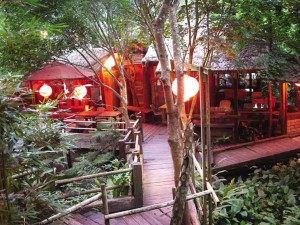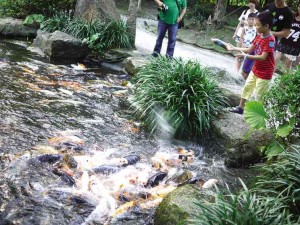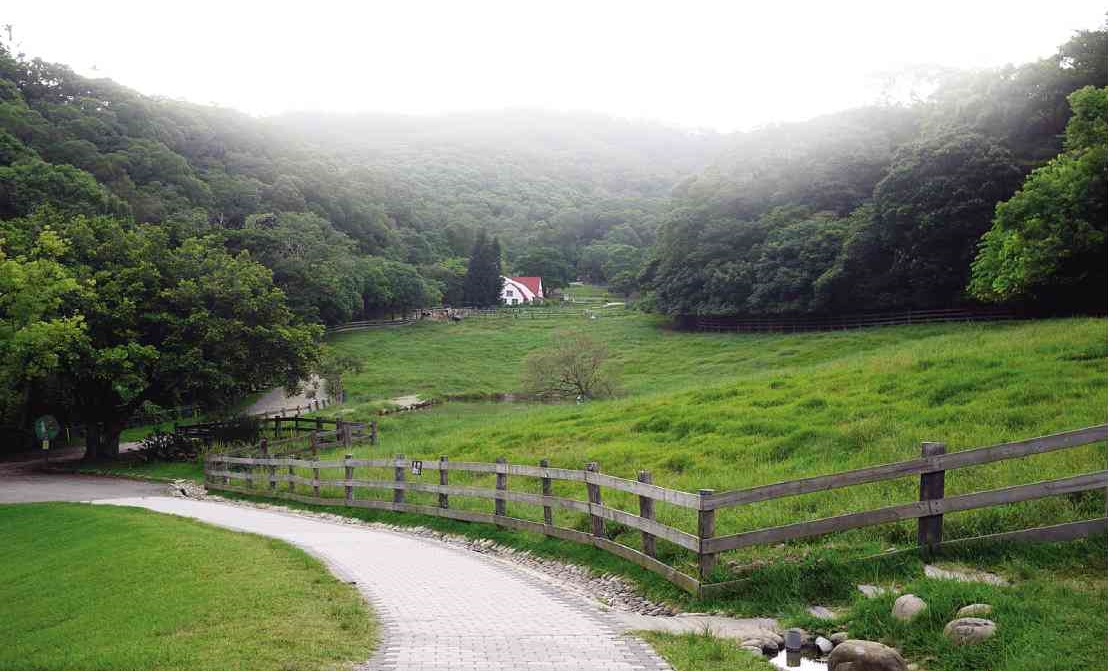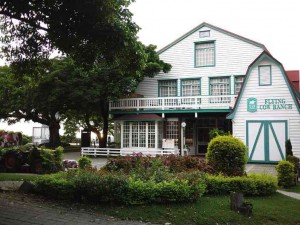
If your idea of Taiwan involves gleaming cities, busy superhighways, inextinguishable neon lights and all the other hallmarks of First World living, you’re not far off the mark. But there’s a largely unreported side of this technological powerhouse, the 28th largest economy in the world, that may surprise you—one that’s rooted in nature, greenery and the countryside.
The Taiwanese are into leisure farms big-time. Some 200 such recreational farms dot the length and breadth of the country (and it’s a small country—about 13,974 square miles, compared to, say, Luzon island in the Philippines at 40,541 square miles).
These farms have become significant destinations not only for many locals in search of relaxing weekend getaways. Increasingly, visitors from Hong Kong, Malaysia and Singapore are also coming in droves.
They come for a variety of come-ons: the vista, the food, amenities, recreational activities for kids and entire families, and the novelty of going back to basics—of relearning local crafts and culture and simpler ways of living rooted in the earth and the natural environment.
For instance, at Flying Cow Ranch, one of Taiwan’s biggest and oldest leisure farms, visitors can enjoy hiking all over undulating green meadows bordered with picket fences, feeding sheep and milking cows in the morning, learning to make ice cream and other milky delicacies, and lodging in a barnhouse-style hotel.
If that experience sounds American, it is quite so.
Jason Shih, the ranch owner, was 29 years old in 1975 when he was sent by the Taiwanese government to Maryland, USA, to study farm management. After 20 months, he came back and bought the first 40 hectares of what would become the Flying Cow Ranch, with a 17-man team working the land.
The original concept was a dairy farm. It was only in 1996 that the place reconfigured itself into a leisure farm and opened commercially.
On its first year, Flying Cow received almost 30,000 visitors. The next year, Shih said that figure jumped to 300,000.
He had hit on a lodestone idea—a recreational destination for urban-weary Taiwanese where they could unwind on open fields, drink fresh milk and savor yogurt and a homegrown delicacy called balloon pudding (milk curdled into custard inside balloon balls that you then prick, releasing the sweet substance inside).
These days, Flying Cow produces 700 liters of milk per day, employs some 200 part-time and full-time employees, has expanded to 100 hectares, and attracts annual visitors of about 400,000—60 percent of them local and 40 percent international tourists.

Shih’s pioneering efforts led him to become the founding president of the Taiwan Leisure Farms Development Association, an industry trade group that, among others, helps its members make the transition from purely agricultural ventures into government-accredited leisure farms with standardized best practices on a range of criteria, from organic practices to service amenities.
Government support has been crucial. These farms may be located in rural parts of Taiwan, but the infrastructure is topnotch, from roads and parking spaces to utilities and telecommunications.
Generational reality
The shift into recreational farming was in part fueled by a generational reality: the children of the original farmers were mostly uninterested in tilling the land, preferring jobs in the city. To lure them to stay, farms were encouraged to innovate and reinvent themselves into hospitality and service destinations, allowing the farmers’ children to diversify and work as chefs, hotel managers, crafts teachers and the like, while at the same overseeing their property.
Flying Cow’s American-ranch character is its own unique touch. Everyone else is free to come up with its own gimmick, as it were.
At Miel High Cafe & Leisure Farm, for example, the main attraction is ginger—the root crop present in all its star dishes and beverages. The main building is a nondescript open-air restaurant by a highway, but the whole area sits atop a promontory that affords an expansive view of the surroundings. Visitors can pick fruits in the sloping orchard below, or bed down in serene, mountain-quiet lodgings.
Not all leisure farms offer accommodations, and the association works like a cooperative to fill the gap. The Shin Yuan Tea Plantation, run by a young American-educated Taiwanese who had to take over the farm after his father’s untimely demise, draws visitors to such activities as fresh tea and pomelo picking and making their own tea-flavored ice cream (via a fun dance routine). But these are all daytime activities; for lodging, visitors are referred to leisure farms nearby.
Mask collection

Shan Ban Qiao Leisure Farm, originally a wood carving studio, attracts its share of the market with its rich collection of more than 1,000 masks. Visitors can paint their own masks or learn wood carving, before resting in comfortable forest cabins by a river or camping on the grounds if they so choose.
The Zhuo Ye Cottage Farm offers a variant—this time not masks but indigo dyeing, the vivid color derived from assam and indigo plants native to the area. The farm also produces peaches, plums, ginger and Chinese mustard, and has one-of-a-kind accommodations: old granaries that have been converted into air-conditioned rooms, set against lush greenery.
Sturgeon, called Ayu Fish by the locals, is the main draw of the Bajia Fish Farm, while the Formosan Snapper, a kind of oversize tilapia but sweeter and more succulent especially when served grilled, attracts hordes to Guan Shin Leisure Farm. Here, the aim is to give visitors a taste of traditional rural life.
Diners wait while the fish is caught in the surrounding pond before being served, or they can hie off to the kilning area where eggs and other food are cooked the ancient way—buried in hot soil. While waiting, they can check out a mini-zoo of farm animals or gather clams in a nearby pond.
Traditional crafts, on top of beautiful landscaped scenery, are offered at Shangri-La Leisure Farm, where families staying in for the night at European-style quarters play games and release sky lanterns in the garden after dinner.
That blend of ecology and culture is also the attraction at Shan Fu Leisure Farm, whose botanic garden allows kids from the cities to see, perhaps for the first time, animals such as frogs, fireflies and butterflies in their natural environment. DIY activities from glass painting and kite-making to T-shirt printing are designed to enrich the bonding time among families.
Outdoor classroom
At the Toucheng Leisure Farm, the main activity aims for a wider social impact. The 110-hectare property becomes an outdoor classroom as visitors who might never have seen a rice field, let alone stepped into one, are encouraged to learn how to plant rice. The activity is usually a hit among kids from such highly urbanized places as Singapore and Hong Kong, who now gain an insight into the origins of the staple food on their table.

The farm’s tour guide, by the way, is a Filipino—Violeta Lin, who has lived for over 40 years in Taiwan and is married to a local. She will not fail to mention that the adjacent property—Cangjiu Leisure Farm, run by one of the sons of the Toucheng Leisure Farm matriarch—is the first privately owned winery in the country.
As such, it is a more upscale version of the traditional agricultural affair, with an architectural stunner of a building hosting restaurants, well-appointed guest rooms and facilities for meetings and conferences, while also anchoring the landscaped grounds amid virgin mountain scenery.
These are just 11 of the more than 200 leisure farms Taiwan has seen fit to nurture, their attractions ranging from the rustic to the sophisticated. Visitors looking for something different from the usual tourist fare can bask in these outposts of rest and recreation—and marvel at how, with fresh thinking and innovation, Taiwan can successfully blend the old with the new.
EVA Air, the flagship carrier of Taiwan, flies from Manila to Taipei everyday. Taiwan Leisure Farms Development Association tel. no. +886-3-9381269, fax +886-3-9382610 or visit www.taiwanfarm.org.tw










































